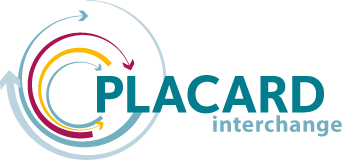Foresight is a systematic, participatory, future intelligence gathering and medium- to long-term vision-building process to inform present-day decisions and mobilise joint actions (European Foresight Platform). This report explores the potential role of foresight in integrating DRR and CCA through an analysis of 20 of the most common foresight methods.
The report also supports European CCA and DRR research programming by distilling key research needs and gaps, and explores potential connections with ongoing or planned research on foresight.
Download the full report
- December 2019: Foresight promotion report for policy & decision-makers (pdf, 1.2 MB)
What is foresight?
Foresight development relies on a set of forward-looking approaches that aim to help decision-makers explore and anticipate what might happen. This allows decision-makers to prepare for a range of possible futures, and influence and shape those futures.
It is important to distinguish between foresight and forecast: foresight is a process rather than a technique. It does not aim to predict the future, but through thinking about, debating and shaping the future in a participatory, open and action-oriented way, it allows exploration of common long-term visions, and desired future conditions.
Foresight methods are used in both CCA and DRR, but are often limited to quantifying risks and do not explore response options. CCA and DRR efforts can be better integrated through use of a broader set of foresight methods, which will help strengthen the link between international mechanisms such as the UNFCCC Paris Agreement, the Sendai Framework and the Sustainable Development Goals (SDGs), by exploring their implications for European, national and local action.
- Informing policy: generating insights regarding the dynamics of change, future challenges and options;
- Facilitating policy implementation: enhancing the capacity for change within a given policy field by building common awareness of current and future challenges as well as new networks and visions among stakeholders;
- Embedding participation in policy-making and thereby improving transparency and legitimacy;
- Supporting policy definition: jointly translating outcomes from the collective process into specific options for policy definition and implementation;
- Reconfiguring the policy system in a way to address long-term challenges;
- Symbolic function: indicating to the public that policy is based on rational information.
Pre-foresight or scoping: objectives and the time-horizon are defined, usually more than 10 years. The scope can be geographical, sectoral or multi-level, as in the case of CCA and DRR.
Recruitment: an analysis of all players and interested or connected stakeholders based on criteria such as relevance, relation intensity and potential conflicts. The challenge for CCA and DRR is that actors vary from local to global and from a range of disciplines such as policy, research, public administration and practice.
Generation: a broad portfolio of traditional and creative methods can be applied to combine knowledge, analyse and synthesise new information and visions for the future. For example, in our foresight training, we used megatrends as drivers of future change.
Action: identify possible futures for each driver – in this case, considering the megatrend approach.
Renewal: focuses on evaluating (learning, evaluation and dissemination).
Common elements from the processes mentioned to support CCA and DRR include:
- CCA and DRR both emphasise the importance of participatory approaches in engaging different actors at different levels and sectors – the broad menu of qualitative and quantitative foresight methods offers opportunities to help with these activities.
- DRR focuses attention mainly on changes in weather extremes, while CCA addresses longer-term concerns in enhancing resilience – a multi-method foresight approach using tools such as analysis of megatrends, wildcards and disruptors will add to the scenario approach common in climate change analysis.
- Foresight tools can help to encourage strategic thinking and prioritisation. The goal of a foresight exercise for CCA and / or DRR should be clearly defined.
- A foresight toolbox has multiple purposes, so the choice of methods should be open-minded and focused on the specific target, objective and time-horizon of a particular problem. The range of methods includes foresight-specific options as well as cross-disciplinary – several can be combined.
Foresight methods that go beyond quantitative scenarios and modelling could increase the effectiveness and of future-thinking work in a joint CCA-DRR policy context.
Foresight may:
- Enhance the effectiveness of participatory processes, cooperation and dialogue
- Produce salient knowledge and capacity building that is relevant for future decision making and policy support
- Facilitate the understanding of issues and concepts such as complexity, uncertainty, non-linearity, wildcards and surprises
- Generate levers that build flexibility into policy measures and across policy areas
- Address different time scales simultaneously, for example, connect long-term CCA prevention with short-term DRR preparedness
- Be used in the context of trust building and the development of shared values
- Allow for the use of a holistic perspective in connecting different policy areas.
Challenges that deserve further consideration:
- Each situation is different and requires specific knowledge input: there is no single “best practice” or “scientifically proven” approach to foresight;
- Foresight is a learning process for all participating actors, making it demanding and difficult even if the stakes are well known;
- People are key: any foresight activity should address ownership by the participants and move beyond scientific/technical considerations as often “perception is considered as reality” for many involved in making decisions;
- Foresight activities should consider both products and processes;
- Foresight does not necessarily lead to quick, direct and easy results so expectations should be moderated;
- Foresight exercises should not adhere to a strict controlled process but rather retain flexibility;
- Recommendations resulting from foresight exercises are not expected to be automatically implemented and should not necessarily be seen as directly leading to priority setting.




